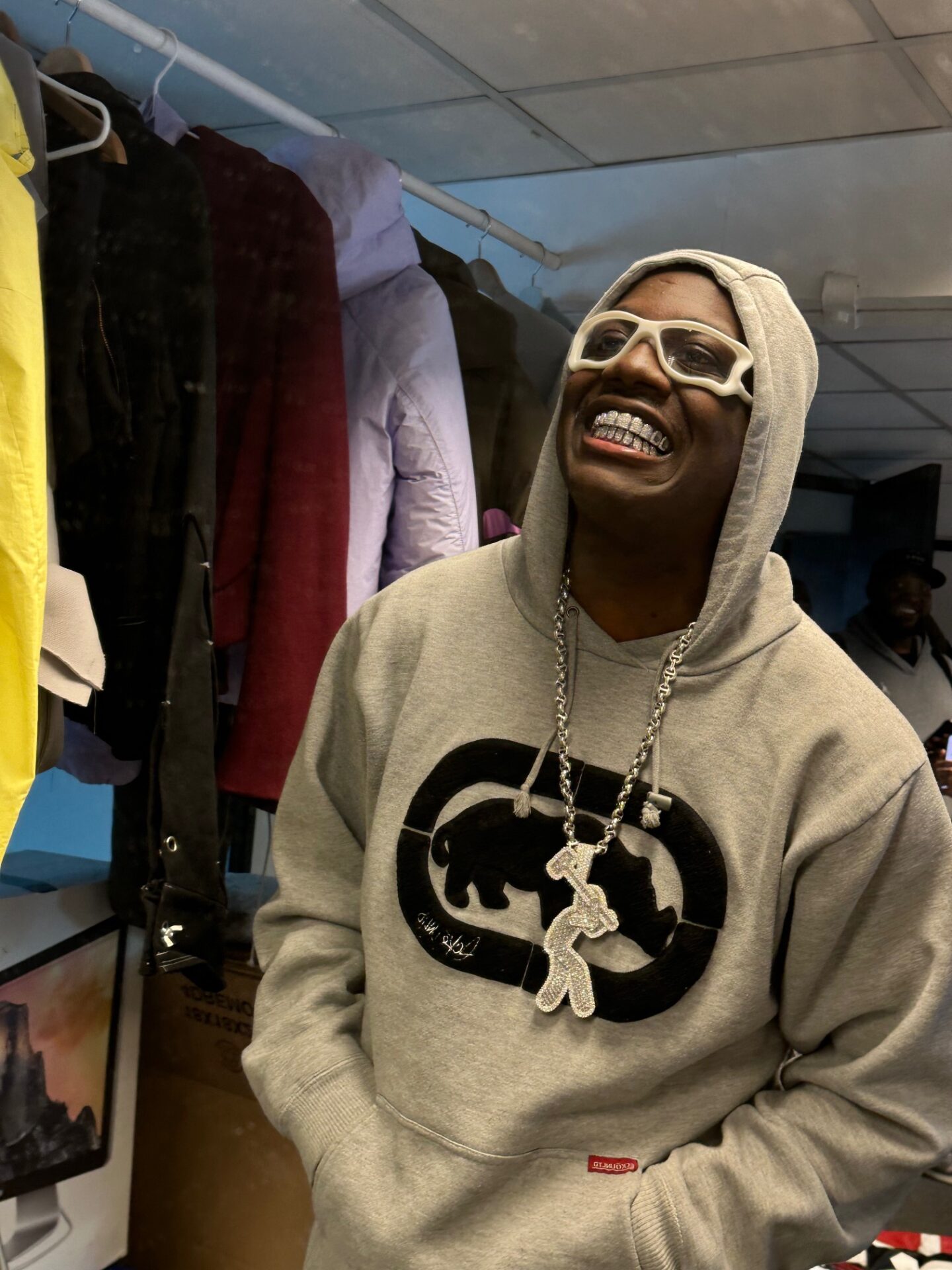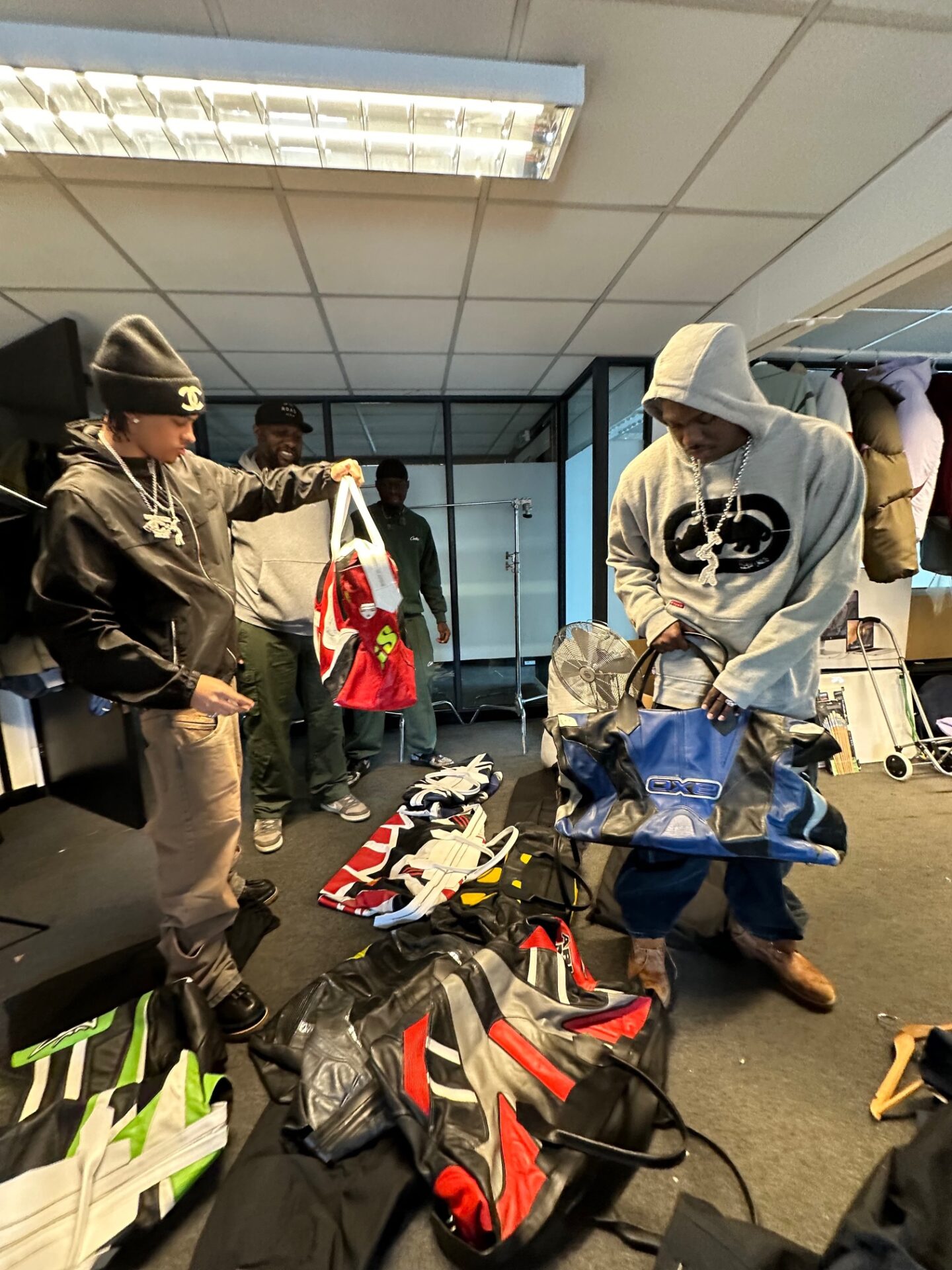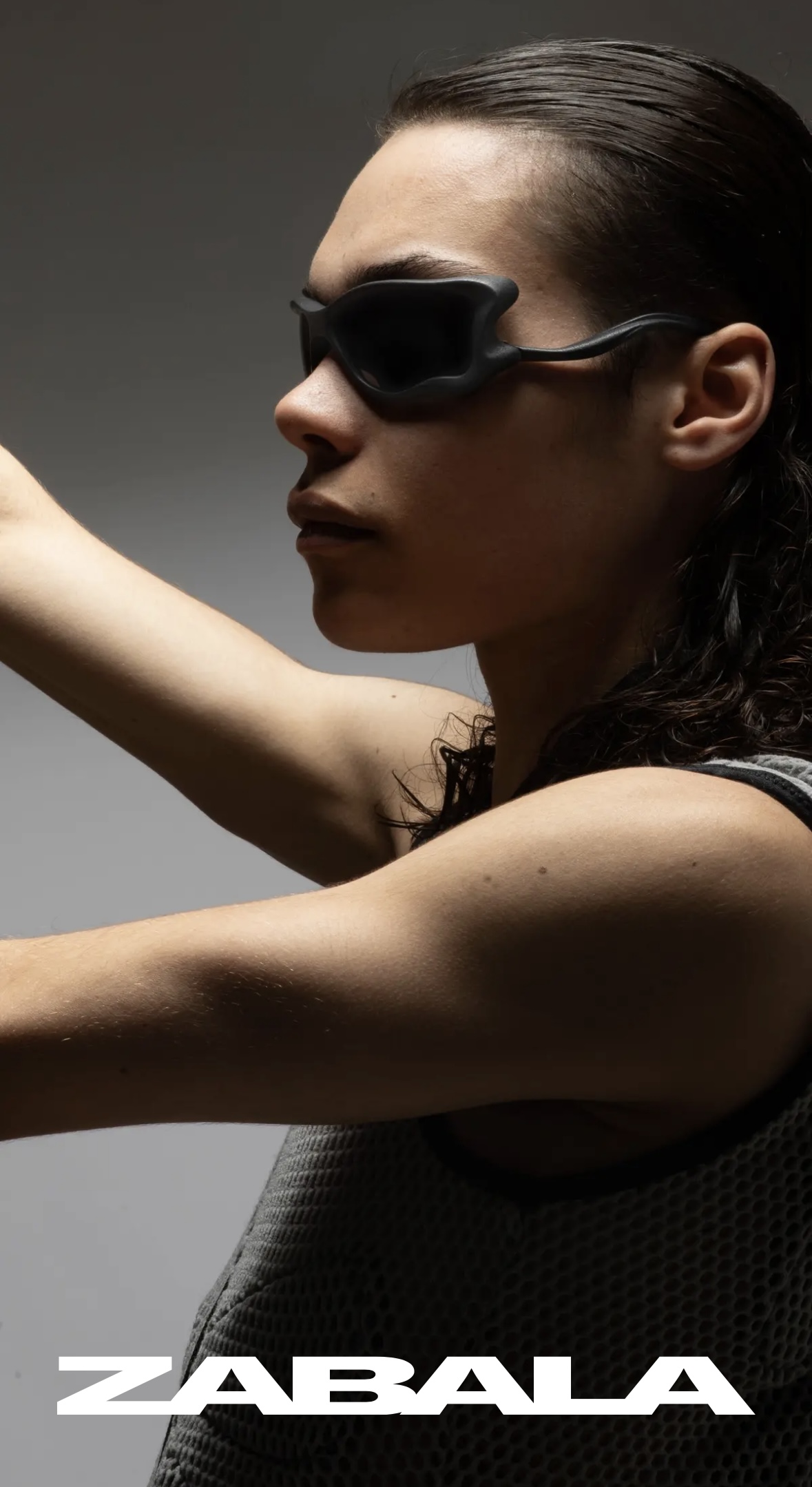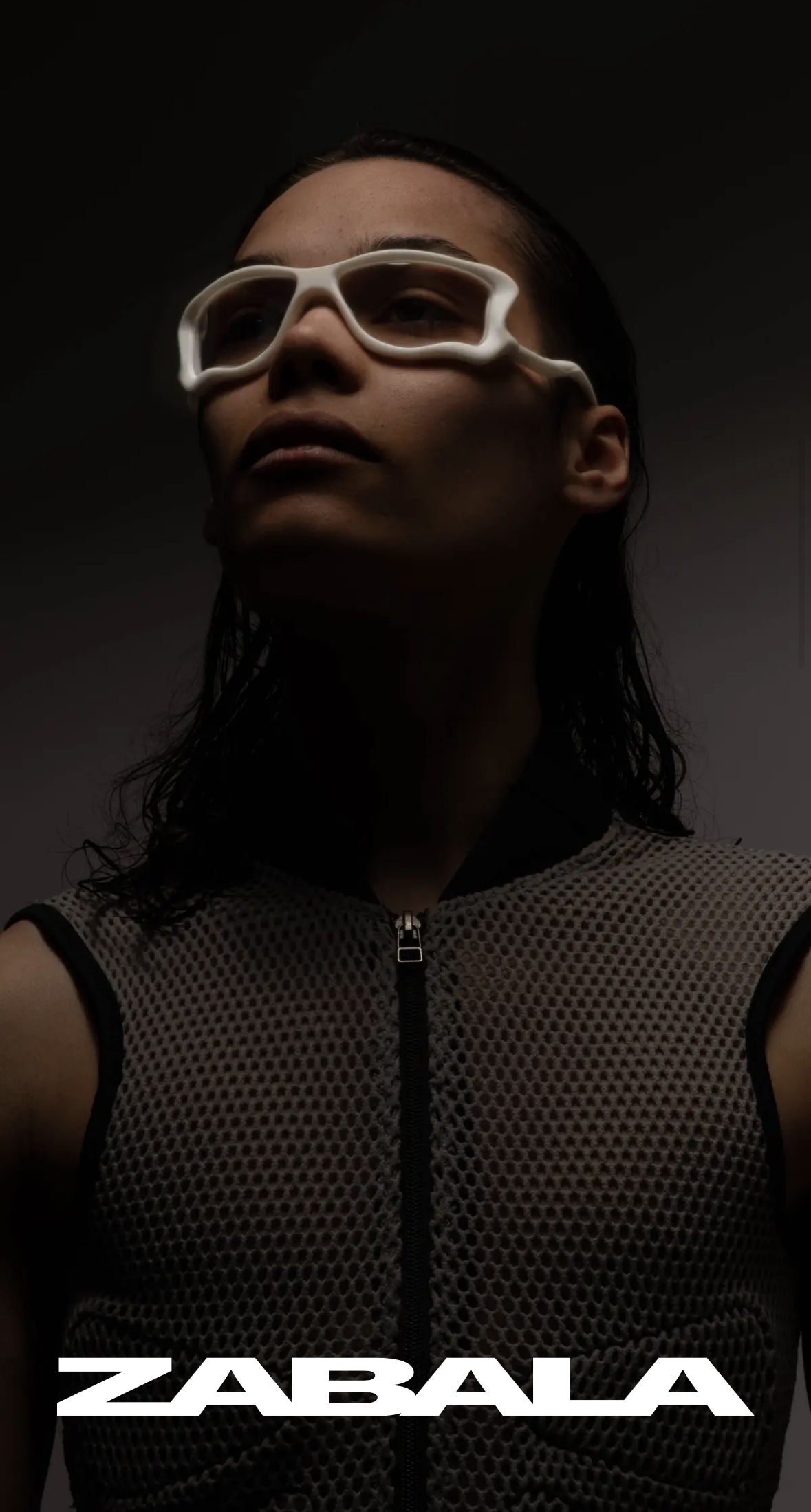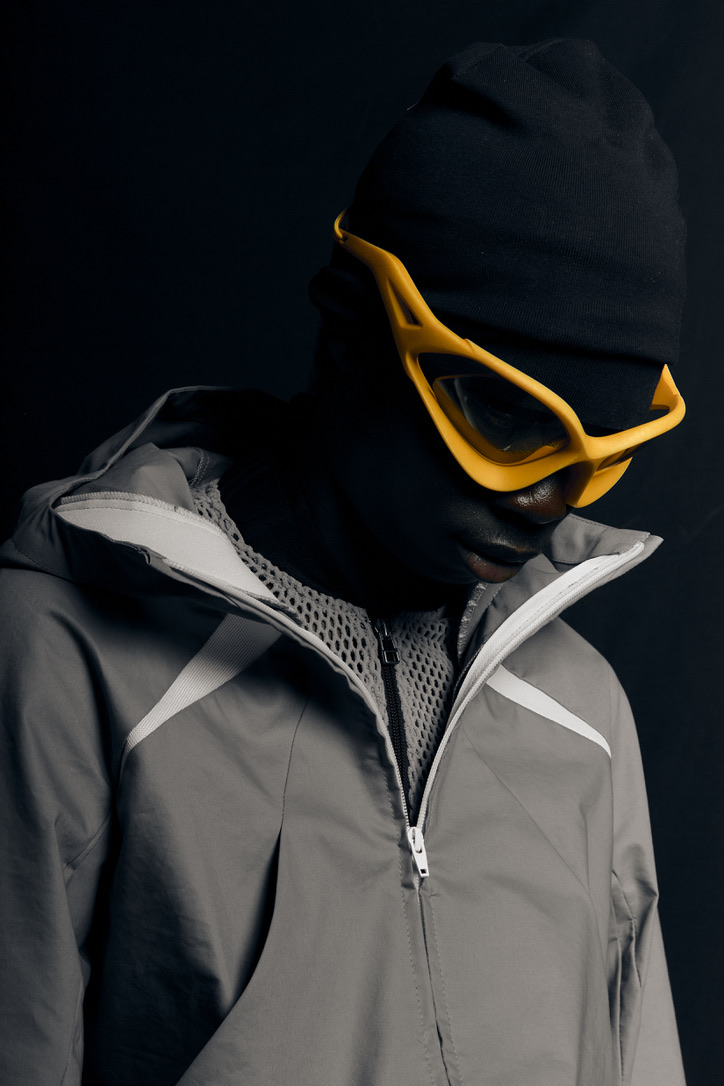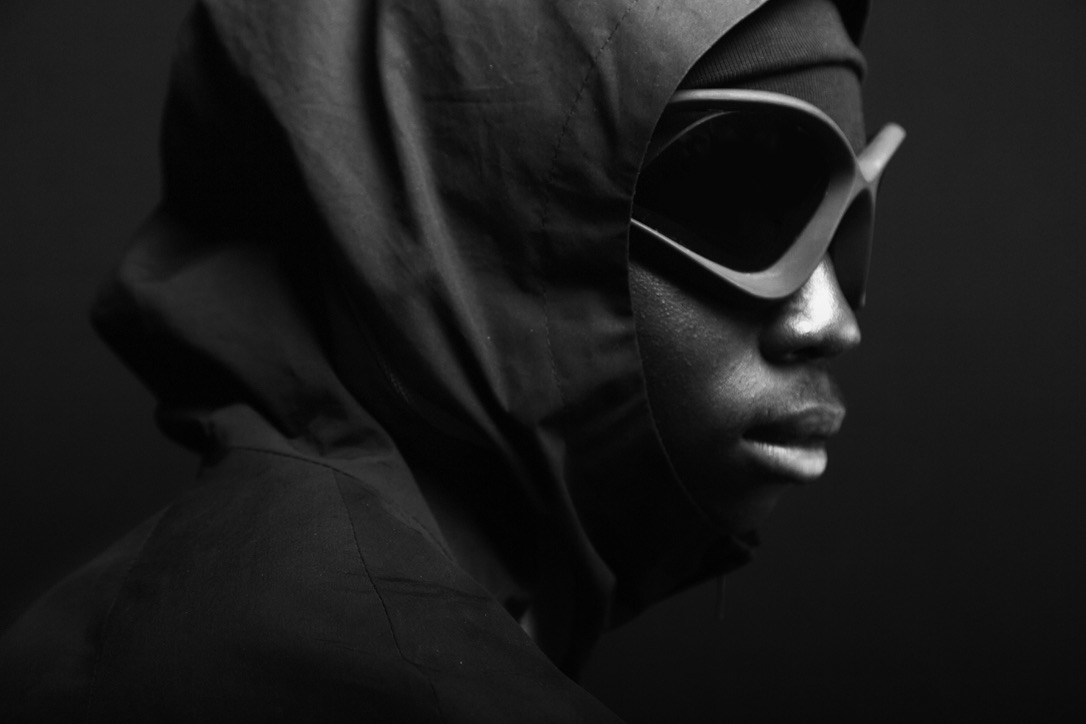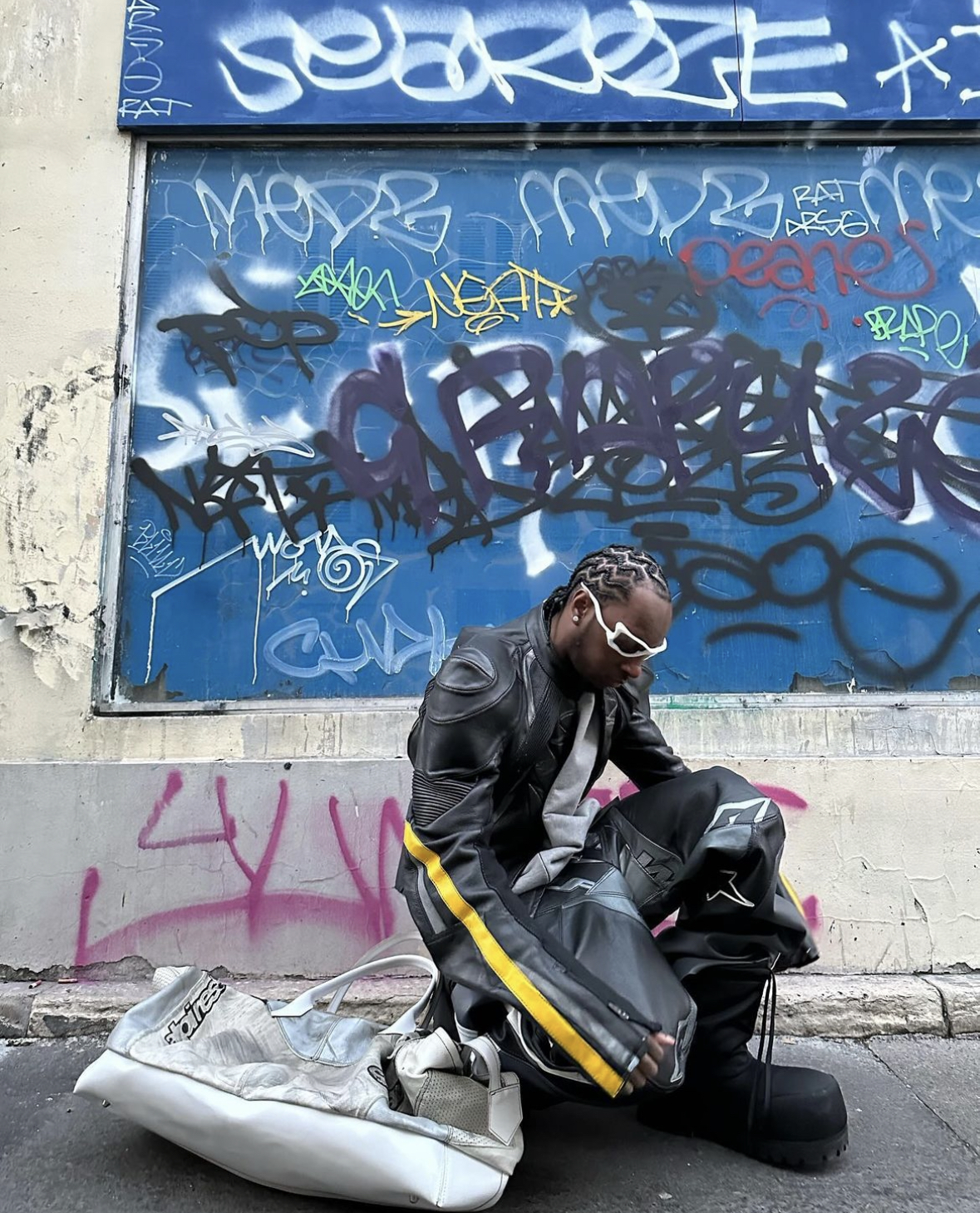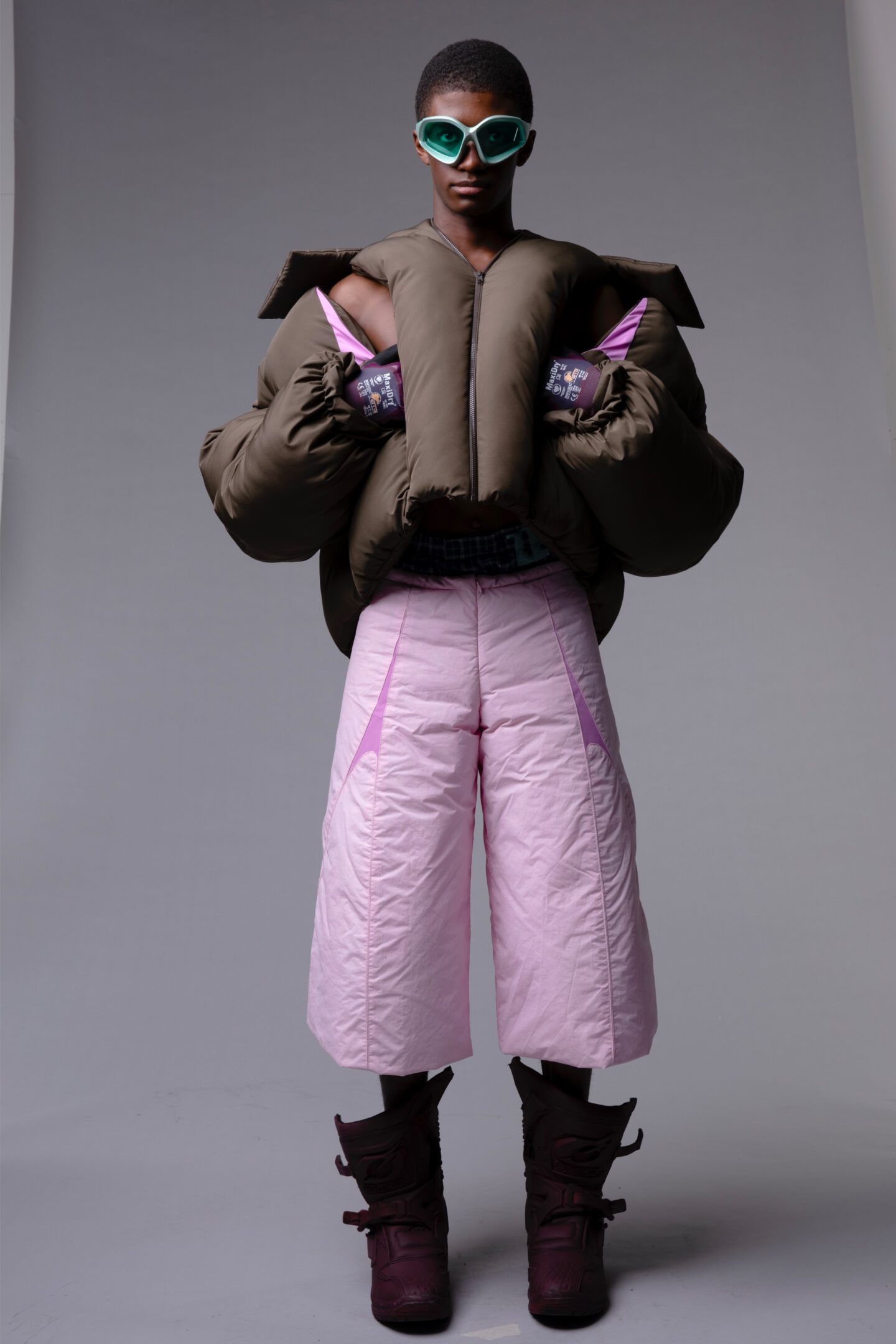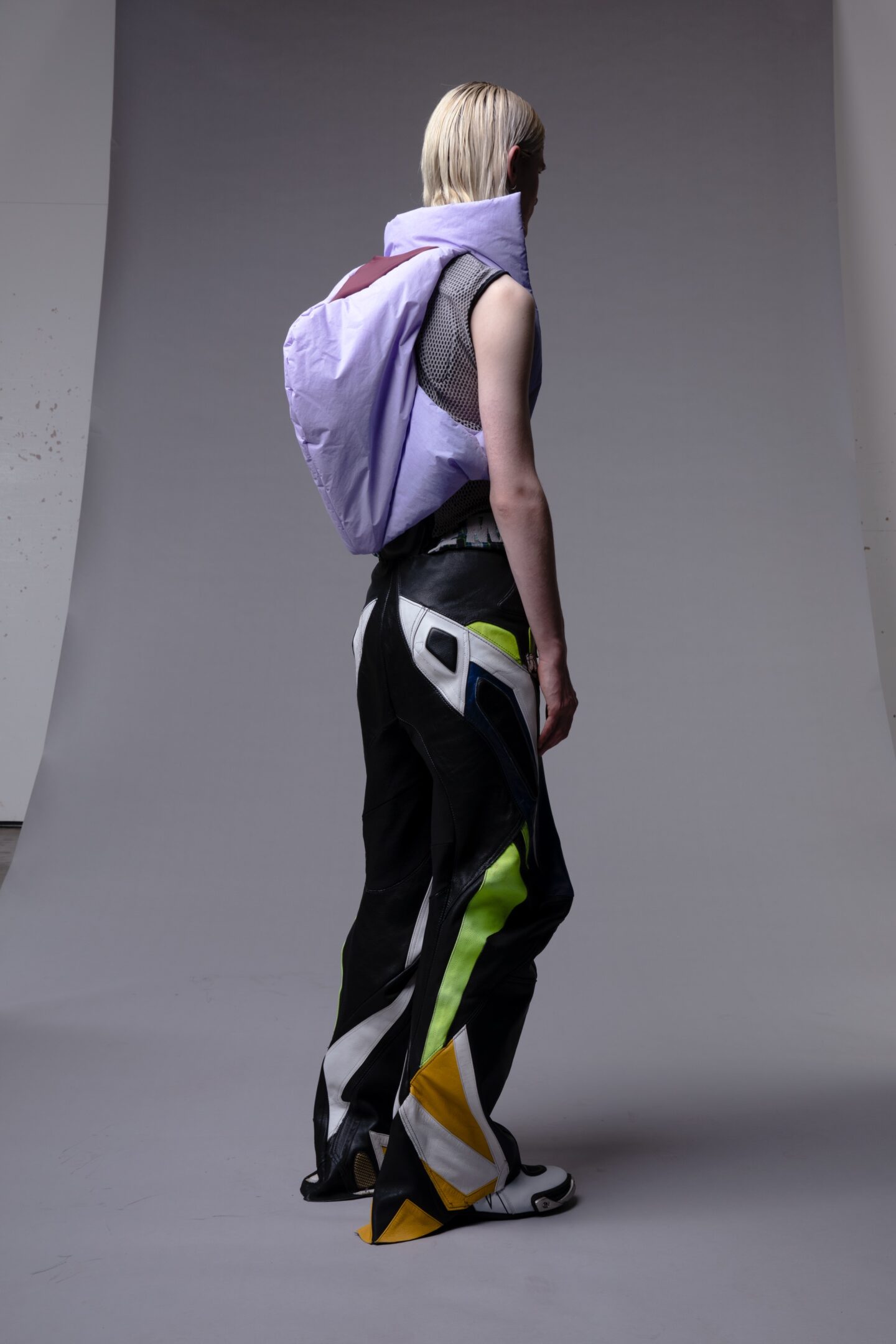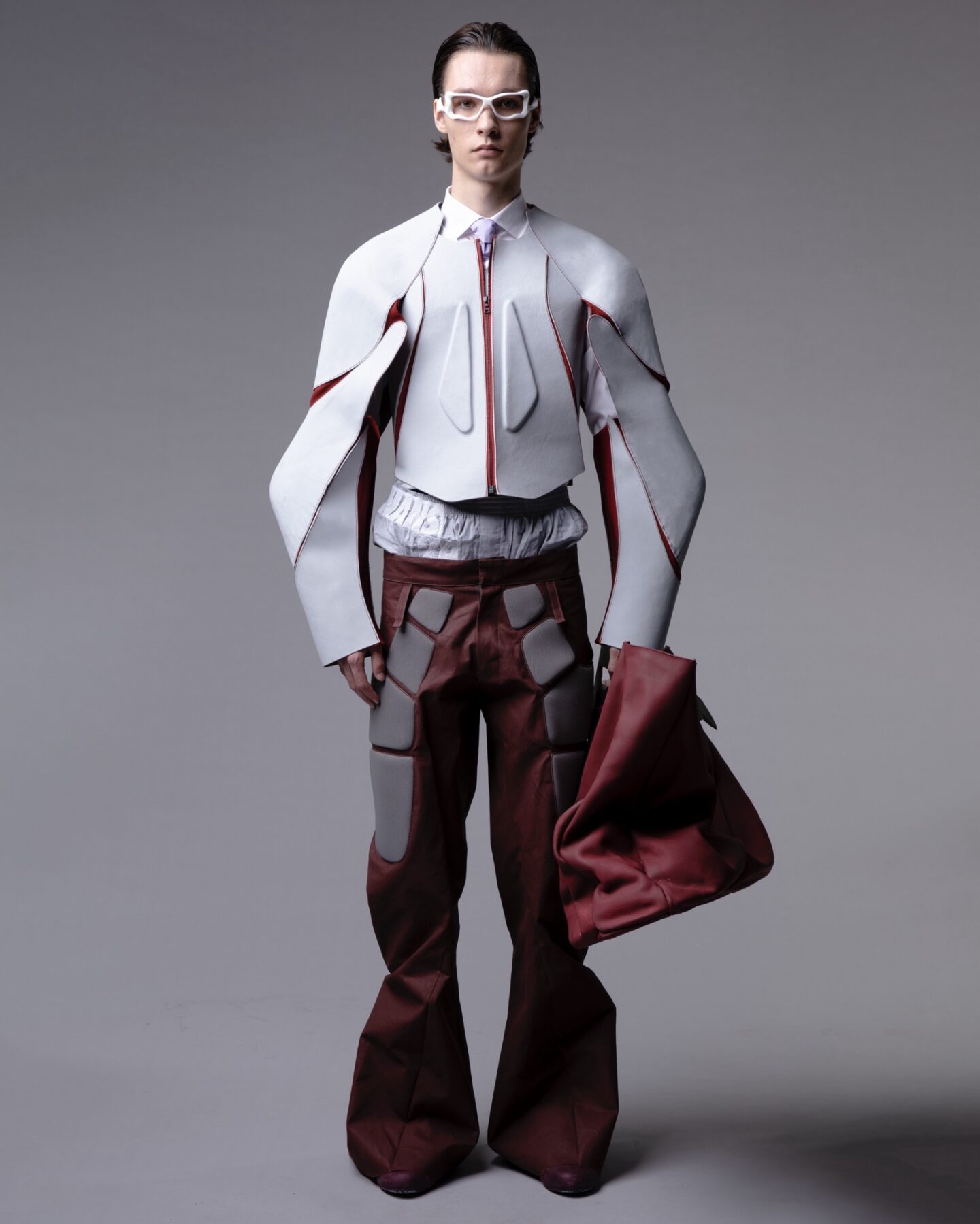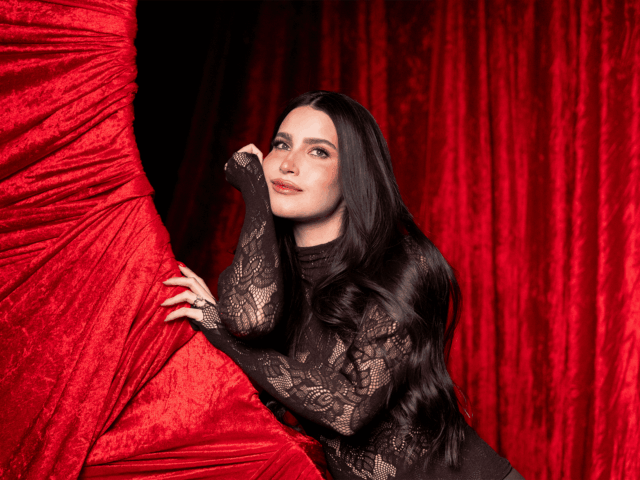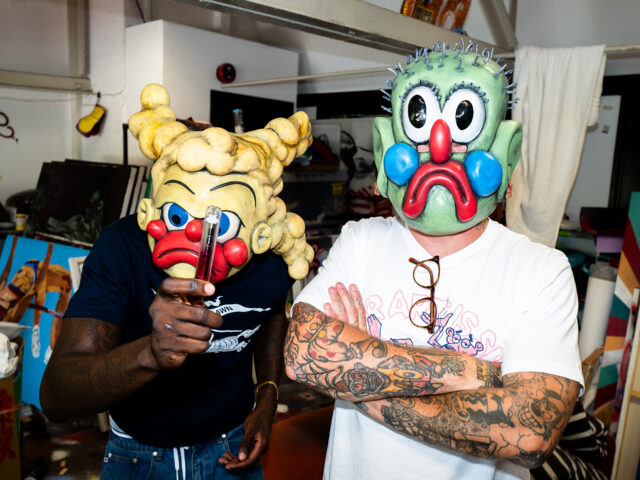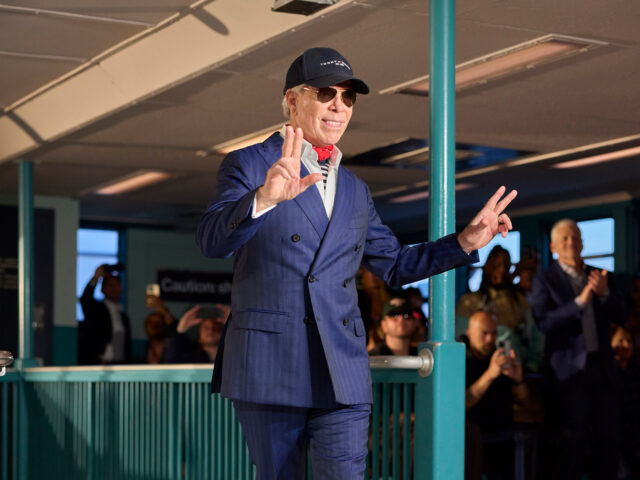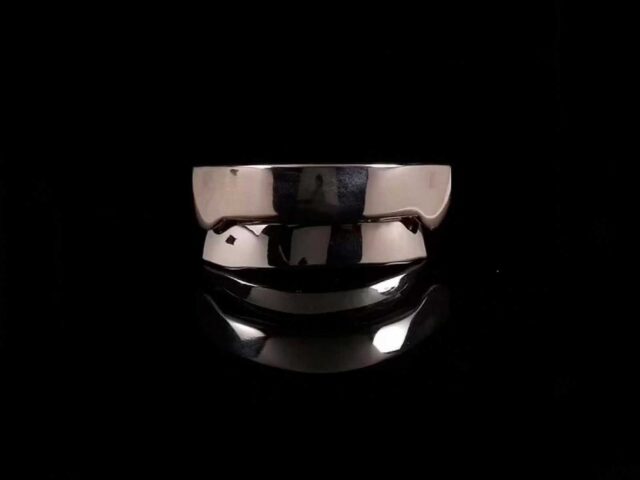On April 29, Lil Yachty opened his European tour in London with a pair of glasses that caught everyone’s attention. A futuristic white frame with liquid-like grooves enveloping rectangular lenses. The creative mind behind them? Mathew ZABALA, one of last year’s graduates from Central Saint Martins, the breeding ground for the fashion masterminds of the future.
The London-based designer launched his debut collection in September last year. In it, we could already see that eyewear was to become a fundamental part of his universe. Soon after, his quilted, biker-inspired menswear and eyewear were spotted at Bloody Osiris at Paris Fashion Week, sitting on the front row of Kenzo’s FW24 show.
On May 1st the Z-FRAMEs finally arrived for the rest of us mortals, and Yachty stopped by Zabala London studio to get an eyeful of his work before starting his tour, and ended up leaving with a pair of them and, Mathew tells us, something else. Last week at his concert in Stockholm, in fact, the rapper wore a total look of the brand and a new model of glasses that he premiered for the first time, as they have not yet gone on sale. We had a conversation with Mathew Zabala to know first hand his universe beyond his connection with Lil Yachty.
HIGHXTAR (H) – The designer of the moment! How are you?
Mathew Zabala (MZ)– Very well, I tell you first of all that I’ve been living here in London for a long time, so when I’m not in Spain it’s harder for me to speak in Spanish.
(H) – Don’t worry, you can say it in English if you are more comfortable. How is life! Just the other day I was talking about you with a friend from San Sebastian who follows your work. It seems that the stars have come together.
(MZ)– Donosti is small, and there are not many people who do fashion there so, we all know each other, you know.
(H) – How long ago did you go to London?
(MZ)– Well, I’m from many different places. I was born in New York, I was living in San Sebastian for a few years; now I have my friends there, so it’s like I have my lifelong group, when I come back it’s like I never left; but I’ve been in London for more than 10 years now.
(H) – So, you went because of your studies.
(MZ)– At first it was because my parents came here for work, but when I knew I wanted to do fashion I knew the best place for me would be Saint Martins.
(H) – You finished in September last year, right?
(MZ)– Yes, that’s when I did the graduation show. Before that I was working in a lot of places. Since we had the COVID era, I was working a lot more because there were opportunities. In that year I went to JW ANDERSON and I was working next to Jonathan, quite close to him, so that was very interesting.
The other one I was working with is Seán McGirr. But I just couldn’t believe it because I was talking to him the other day and all of a sudden, I see him at the Met Gala with Kim Kardashian!
(H) – Didn’t you know that Alexander McQueen had appointed him?
(MZ)– Before that, I could imagine that he was going to go somewhere big, but I didn’t know that much. In fact, when he started at McQueen we talked and he offered me to go there with him but I was already doing my own thing. At JW I was designing a lot, which was very important to me because normally when you’re designing at these brands you don’t always get that much chance to design as such. From the moment I arrived I was designing for Moncler for example, and I didn’t believe it.
In fact, I think I learned a lot more working for these brands than I did at uni, because with COVID you couldn’t do much there either, but it was good for me.
(H) – In the end, the opportunity to work for such important brands gives you more experience than university.
(MZ)– Of course, I also don’t use my agenda to get a job. I want to consolidate my own brand. High fashion, for me it was one of those things that, I can see it feasible, but I didn’t want to start that typical and irremediable path of any firm in which you start as a normal designer and then you can move up. The chances of promotion are sometimes minimal. If you don’t know someone, you’re probably not going to get it. I’ve been with a lot of designers, and there are people who are brilliant at their job but stay in the same position with no chance of promotion, so when I saw that I said, “Well, I’m going to do my own thing.”
(H) – That’s when you went to New York?
(MZ)– After JW, I went to New York to work at Harley Davidson. That year they were revamping the brand. Louise Goldin, another CSM graduate who had been a designer at Yeezy, was as creative director of the women’s section. I was working alongside her as a menswear designer. It was one of those very important moments for me because it was the first time I had to review the whole creative process: I was talking to the manufactures, controlling the photo shoots from beginning to end…. I had more things to be responsible for, and that helped me to become more experienced. I already wanted to do it for my own brand, so I had to learn everything, not just design. At that moment I realized that many times it doesn’t depend a lot on whether you are good or bad or if you are more creative or less designing, but that the industry also has a lot to do with who you know. But well, there are people who have started without being known at all, so we’ll see what happens.
(H) – How long have you been with Zabala since you graduated?
(MZ)– Yes, but after I graduated I was working but more as a freelancer. I was making custom pieces for my clients. Now I’m starting my own thing. All that money I was making from the customs was to start my brand really, and the other day when Lil Yachty came, it was a turning point when I said to myself: “I’m starting seriously now”; and now it’s all starting to roll.
(H) – And how did you start making glasses?
(MZ)– The accessories thing was one of those things that when I started my collection I already knew I wanted to have in my brand. I started designing glasses, sneakers, bags… Glasses were one of those things I wanted to explore more, so for the prescription collection I created a prototype of what I wanted to continue developing and today they are the Z-FRAMES.
The world of eyewear is more difficult than that of textiles. With fabric, when you have to make a change, you make it and sew it in. When it comes to product development, you have to do trial and error all the time. So it was a lot of finding people who could make the model: a 3D expert, someone who could make the frames -which in the end are not normative-, put the lenses… It’s been a year since I started with the glasses. And when you see the first ones, it’s like they are very bad, but now there is a refined final product.
I also designed a box for these glasses that is very special. I don’t know if you’ve seen the video on my instagram of the mold process. It’s like the process in which the color of the frame is made. It’s called Vacuum Forming, and it’s the one they use to make the color of cars and motorcycles. Since the idea for these glasses came from the world of motorcycling, I thought it was very cool to put a reference of the engine and the processes used to make the case.
Now I’m already making others for Yachty.
(H) – A new model?
(MZ)– A new model, the Zabala Infinity Frames. He wore them at her Stockholm show last week, matching an outfit I made. I almost had the sunglasses but hadn’t finished them until now because when you’re making something you don’t really know if people are going to like it. You might love it but you don’t know if it’s going to work. But in the end the most important thing is that you like it yourself so that you can then pass it on to people.
(H) – Nowadays with Instagram and the amount of avenues of communication it’s very easy for someone on the other side of the world to know you and like your work.
(MZ)– Yes, for that it’s great. And it’s also important for me to generate a community of people who share my universe. For example, with Lil Yachty, I was 15 when I went to his first show in London. The guy is not much older than me. I also know one of his friends very well, Bloody Osiris, who I work with a lot. So I feel in part that our connection has also come about in a natural way and from a common vision of both of us, and that’s the best thing that can happen to you.
(H) – Is it because of Bloody Osiris that Lil Yachty met you?
(MZ)– Not exactly. Lil Yachty came to the studio for Karrahbooo. I knew they were in London and so I wrote her to come by the studio, and when she was already here she called Yachty to come see the clothes.
He’s a really nice guy, he loves clothes and trying new things. I love it when people want to interact with the pieces, try them on, look at them… And then it was almost by surprise that he put on the glasses to open his first show of the tour.
(H) – It must have been like a milestone for you, considering that you admire him as an artist.
(MZ)– When you’re working and working every day you’re a bit absorbed in your world really. I work Monday through Sunday, Monday through Thursday I do 12 hours a day, but it’s because I love what I do. But sometimes I’m so wrapped up in my world that maybe what I’m doing is not what I think it is, so to have the respect and approval of those people that I admire is very strong for me.
(H) – I’ve also seen him with the bags.
(MZ)– He loved them! I don’t know what I’m going to do with the bags with him because I have to see him soon. When he came he was looking for something for the performance that night, so now, with more time, we’ll talk about other things.
Bloody Osiris loved them too, I don’t know if you’ve seen him with them around.
Those bags are very special because I have done almost everything except the assembly. With them I want to do a campaign where all the clothes are mine, even though I can’t take them out for sale yet, because there’s too much. So I have it more in mind for editorial and for people, and with that, I will try to do some at the beginning. Since I don’t have funding from LVMH or something like that, I have to do everything in steps, managing everything very well.
I’m also doing a collaboration with an eyewear company called Polette.
(H) – Is this the brand with which you are going to make the next glasses?
(MZ)– It’s something else, a different collection. This brand, when they contacted me it was great because I have talked to many brands, but very few let you do what you want. In Polette they wanted to get more into my world.
With them I’m going to bring out two ranges of glasses. They will come out this summer. They’re all going to be paired with my clothes; I’m actually doing a capsule collection specifically for this.
They’ve let me do everything. In London they’re going to let me use the store they have on Oxford Street and I’m going to take it all down to do a pop up. It’s also an opportunity because I think this collaboration is going to go to Asia a lot. So being one of the markets where I’m not in yet, but where I know people who are interested in my move, it opens a lot of doors for me.
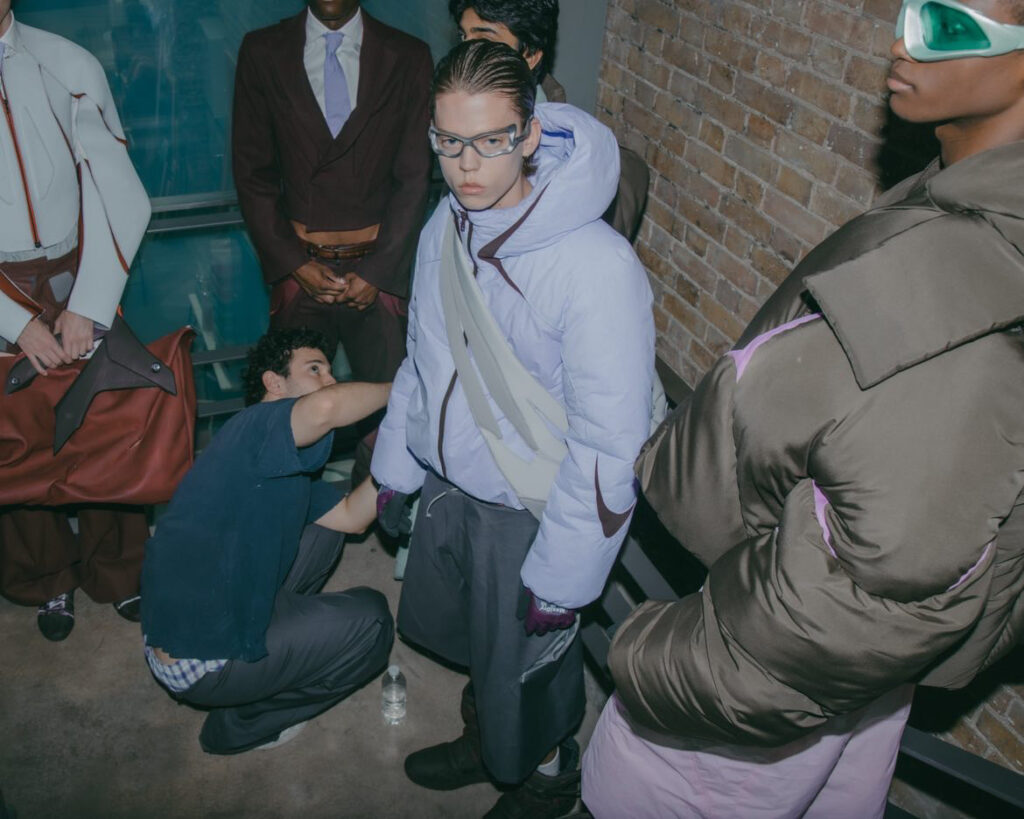
(H) – I’ve been taking a look at your collection, do you draw a lot of inspiration from the world of motorsport to make your clothes?
(MZ)– Right now, not so much. At the time as I was working at Harley Davidson I was very into that world, and I had a lot of references from that. When I was growing up I also did motocross, so it was something I wanted to materialize. I like to get into worlds and design that world and then go out, but it’s all with the same eye. Everything is different but ZABALA at the same time.
I think of it like when you see Miu Miu. It’s a young girl, naive but sexy… Mine is like that but for men.
I’m starting from the beginning; when I was little, what I wanted to do is to be on a motorcycle. So I wanted to do the same thing with my brand, which starts as more of a baby stage and then becomes adult. I want to play with that.
(H) – What inspires you now?
(MZ)– Prada is one that inspires me a lot, but I’m more inspired by how they look at clothes. They don’t force it too much, in the sense that, I see a lot of fashion that is like they try too hard to do something super crazy. At Prada they do something unique but different every show, and even though they experiment with concepts they’re still timeless, that’s what fascinates me. So I want to go more in that direction. I wanted to start with things that can be timeless for certain people but are more outsider. And then, already with a base collection, refining and maturing, as if the brand was a human being.
I’m also very into Craig Green, but I don’t see much fashion in general, to be honest; I prefer to see other types of clothes. I’d rather go to a gardening store and look at the gardeners’ uniforms. I mean, obviously I look at fashion, because that’s all I think about every day. I’m always going to see Prada, Miu Miu. Raf Simons for me is also… now that he’s at Prada I’m very happy.
(H) – I think Raf Simons is very underrated. There are other much more recognized designers who have done much less, and Raf has actually changed a lot of culture and changed a lot of things about how fashion is seen today, but no one has realized that.
(MZ)– I’m doing right now what I’m doing because of him, because if you look at his runways from 2004…he’s the creator of streetwear. He knew what he was doing in those years.
(H) –Are accessories going to become an important part of your brand?
(MZ)– There is so much fashion that, it’s like, you have to do your own thing, or else leave it. Bags, for example, I make them because when I’m traveling from one place to another, I’m thinking about it. Right now I’m designing “The Zabala Look”, which is going to be a bag, a pair of glasses, uh, with underwear, pants and a jacket. With that set I’m going to show you what you can do with one look, you know? Yes, it’s like having one piece, or a complete look, that evolves into various forms.
(H) –I was thinking these days, as a result of talking to you, that there is a lot of Spanish talent at fashion level that in the end ends up leaving us. What happens here so that talent is not retained or things are not done in favor of fashion?
(MZ)– I think Spain is very closed in that aspect. Many people don’t value design as such, and without appreciating that, a designer can’t make a living from his or her designs. Here in London, people save up to buy an exclusive garment that no one else may have. The Spaniard is a different way; he prefers to spend 200 euros on a dinner than on clothes. And I understand that. It’s purely cultural.
It’s also very difficult because with all those INDITEX brands, the idea of the value of clothing has changed so much now… they make people believe that it’s possible to make a pair of pants and have them cost 10 euros, and in reality it’s unsustainable.
I started reading Balenciaga’s book, and at that time clothes had much more value. I think that now, and we are in the information age, with everything we see, people do not understand or do not want to understand how clothes are made. Now what has value is the brand or the name, not the piece itself.
Many of my clients buy pieces from me because they know it’s something that no one else will have. That “uniqueness” factor is also what moves a lot of consumers here, and also in the United States.
Sigue toda la información de HIGHXTAR desde Facebook, Twitter o Instagram
You may also like...

